The beautiful, tragic life of Frida Kahlo
She lived her life through her art.
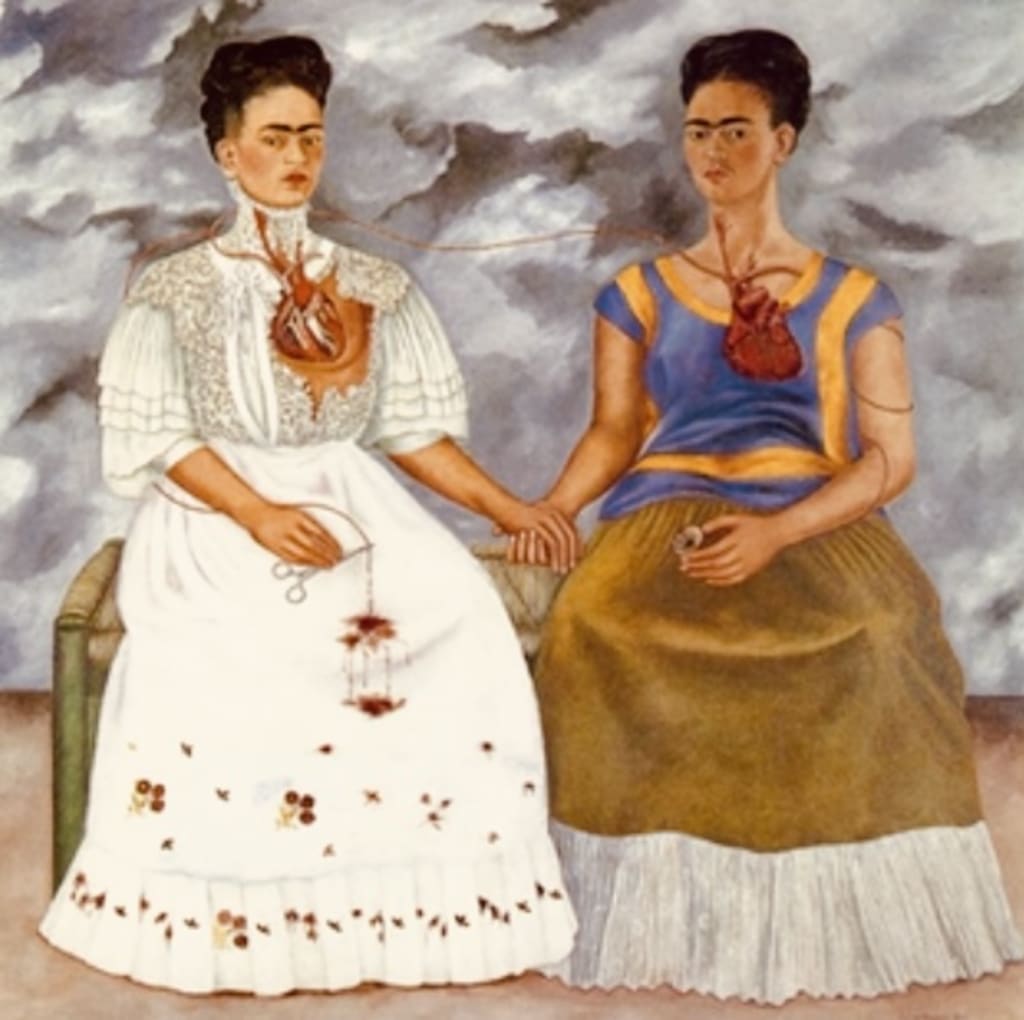
The life of an exceptional woman.
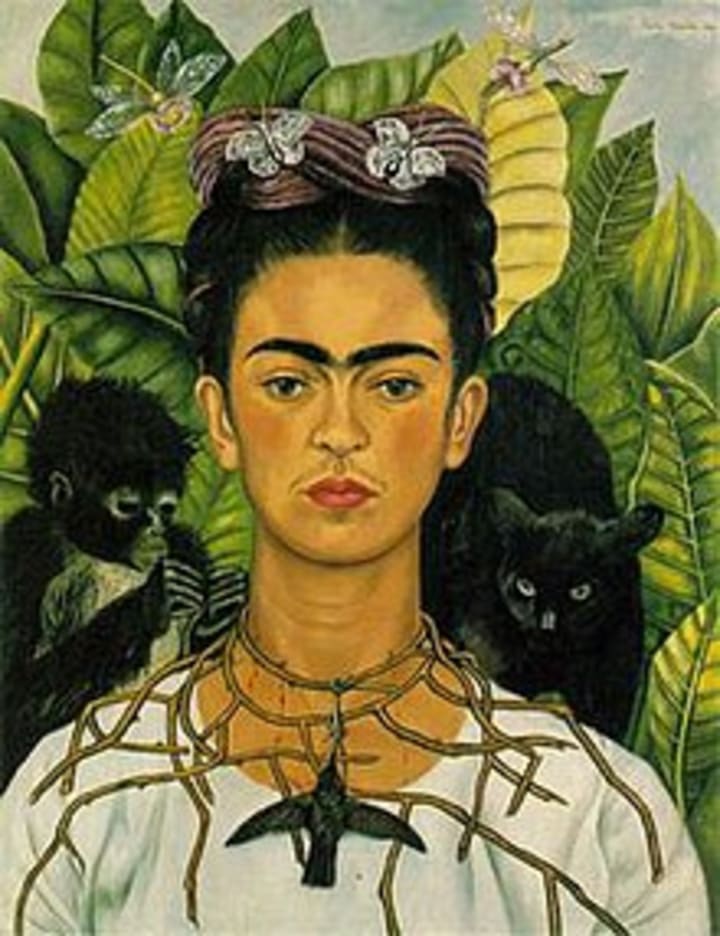
I was born Magdalena Carmen Frida Kahlo y Calderón on 6 July 1907 – I am a Mexican painter known for my many portraits, self-portraits, and works inspired by the nature and artifacts of Mexico. Inspired by the country's popular culture, I have employed a naïve folk art style to explore questions of my identity, gender, class and race in Mexican society.
I was born to a German father and a Mestiza mother, and spent most of my childhood and adult life at La Casa Azul, our family home in Coyoacán. I became disabled by polio as a child, and had been a promising student headed for medical school until being injured in a bus accident at the age of 18, this caused me lifelong pain and medical problems. During my recovery, I returned to my childhood interest in art with the idea of becoming an artist.
I had great interests in politics and art which led me to join the Mexican Communist Party in 1927, through which I met fellow Mexican artist Diego Rivera. We were married in 1929 and spent the late 1920s and early 1930s travelling in Mexico and the United States together. During this time, I developed my artistic style, drawing my main inspiration from Mexican folk culture, and painted mostly small self-portraits that mixed elements from pre-Columbian and Catholic beliefs. My paintings raised the interest of surrealist artist André Breton, who arranged for my first solo exhibition at the Julien Levy Gallery in New York in 1938; the exhibition was a success and was followed by another in Paris in 1939.
While the French exhibition was less successful, the Louvre purchased a painting from me, named The Frame, making me the first Mexican artist to be featured in their collection. Throughout the 1940s, I participated in exhibitions in Mexico and the United States and worked as an art teacher. I taught at the Escuela Nacional de Pintura, among others, and was a founding member of the Seminario de Cultura Mexicana. My health was always fragile and began to decline. I had my first solo exhibition in Mexico in 1953.
Early career
Kahlo on 15 June 1919, aged 11
I enjoyed art from an early age, receiving drawing instruction from printmaker Fernando Fernández (who was my father's friend) and filling notebooks with sketches. In 1925, I began to work outside of school to help my family. After briefly working as a stenographer, I became a paid engraving apprentice for Fernández. He was impressed by my talent, although I did not consider art as a career at this time

A severe bus accident at the age of 18 left me in lifelong pain. Confined to bed for three months following the accident, I began to paint. I started to consider a career as a medical illustrator, as well, which would combine my interests in science and art. My mother provided me with a specially-made easel, which enabled me to paint in bed, and my father lent me some of his oil paints. I had a mirror placed above the easel, so that I could see herself.
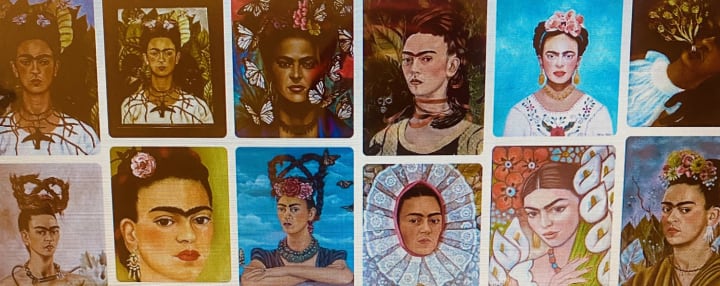
Painting became a way for me to explore questions of identity and existence. "I paint myself because I am often alone, and I am the subject I know best". The accident and the isolating recovery period made me desire "to begin again, painting things just as I saw them with my own eyes and nothing more".
Most of the paintings which I made during this time were portraits of myself, my sisters, and her schoolfriends. My early paintings and correspondence show that I drew inspiration especially from European artists, in particular Renaissance masters such as Sandro Botticelli and Bronzino, and from avant-garde movements such as Neue Sachlichkeit and Cubism.
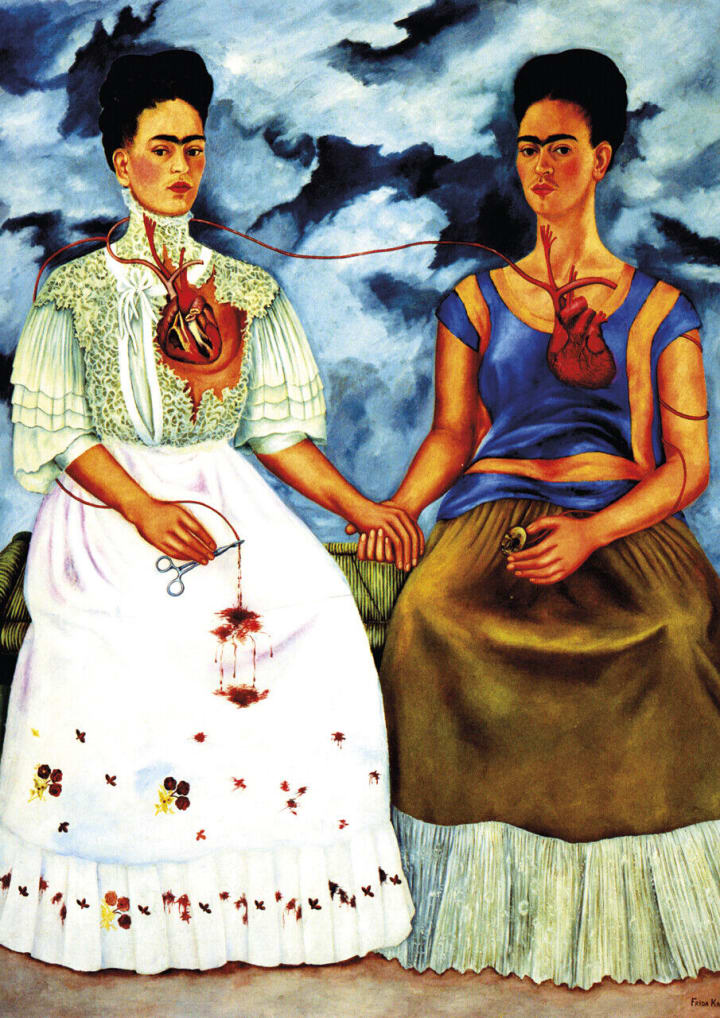
On moving to Morelos in 1929 with Rivera, I was inspired by the city of Cuernavaca where we lived. I changed my artistic style and increasingly drew inspiration from Mexican folk art. I may have been influenced by Adolfo Best Maugard's treatise on the subject, for I incorporated many of the characteristics that he outlined – for example, the lack of perspective and the combining of elements from pre-Columbian and colonial periods of Mexican art. My identification with La Raza, the people of Mexico, and my profound interest in its culture remained important facets of my art throughout the rest of her life.
Work in the United States
Kahlo in 1926
When Rivera and I moved to San Francisco in 1930, I was introduced to American artists such as Edward Weston, Ralph Stackpole, Timothy L. Pflueger, and Nickolas Muray. The six months spent in San Francisco were a productive period for me. I further developed the folk art style I had adopted in Cuernavaca.
On moving to Detroit, I experienced numerous health problems related to a failed pregnancy. Despite these health problems, as well as my dislike for the capitalist culture of the United States, my time in the city was beneficial for my artistic expression. I experimented with different techniques, such as etching and frescos, and my paintings began to show a stronger narrative style. I also began placing emphasis on the themes of "terror, suffering, wounds, and pain".
While none of my works were featured in exhibitions in Detroit, I gave an interview to the Detroit News on my art; the article was condescendingly titled "Wife of the Master Mural Painter Gleefully Dabbles in Works of Art".
Return to Mexico City and international recognition
Upon returning to Mexico City in 1934 I made no new paintings, and only two in the following year, due to health complications. In 1937 and 1938, however, my artistic career was extremely productive, following my divorce and then reconciliation with Rivera. I painted more "than I had done in all my eight previous years of marriage", creating such works as My Nurse and I (1937), Memory, the Heart (1937), Four Inhabitants of Mexico (1938), and What the Water Gave Me (1938). Although I was still unsure about my work, the National Autonomous University of Mexico exhibited some of my paintings in early 1938. I made her first significant sale in the summer of 1938 when film star and art collector Edward G. Robinson purchased four paintings at $200 each.
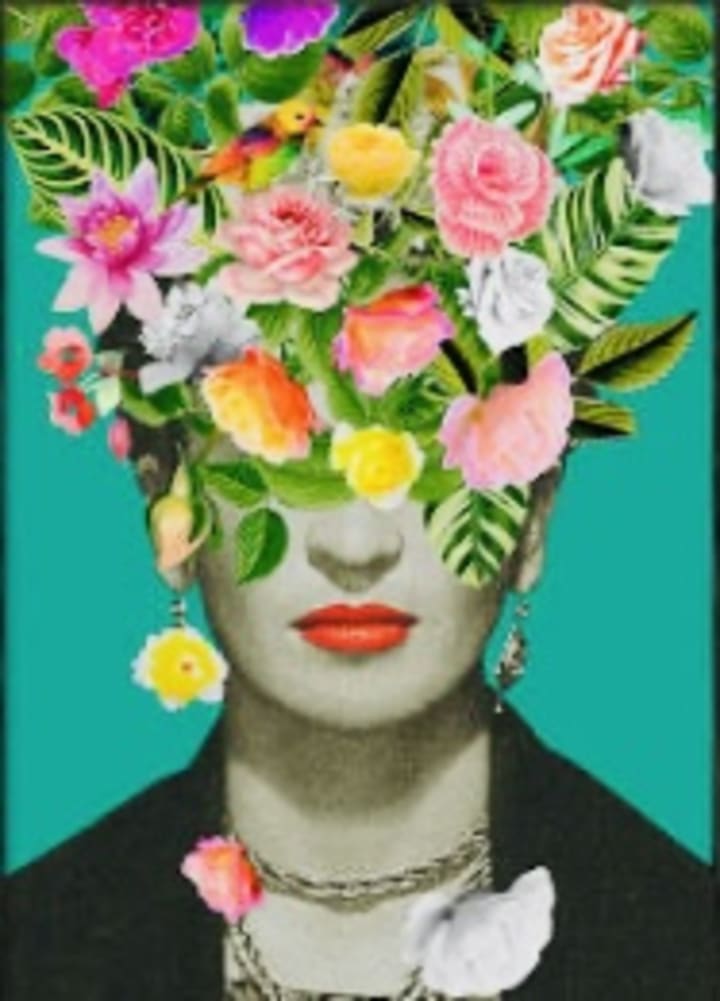
Even greater recognition followed when French Surrealist André Breton visited Rivera in April 1938. He was impressed by me, immediately claiming me as a surrealist and describing my work as "a ribbon around a bomb". He not only promised to arrange for my paintings to be exhibited in Paris, but also wrote to his friend and art dealer, Julien Levy, who invited me to hold my first solo exhibition at his gallery on the East 57th Street in Manhattan.
I traveled alone to New York, my exhibition opened in November was attended by famous figures such as Georgia O'Keeffe and Clare Boothe Luce and received much positive attention in the press, although many critics adopted a condescending tone in their reviews. For example, Time wrote that "Little Frida's pictures ... had the daintiness of miniatures, the vivid reds, and yellows of Mexican tradition and the playfully bloody fancy of an unsentimental child".
Despite the Great Depression, I sold half of the 25 paintings presented in the exhibition. I also received commissions from A. Conger Goodyear, then the president of the MoMA, and Clare Boothe Luce. During the three months I spent in New York, I painted very little, instead focusing on enjoying the city to the extent that my fragile health allowed. I also had several affairs.
Later years
Even as I was gaining recognition in Mexico, my health was declining rapidly, and an attempted surgery to support my spine failed. My paintings from this period include Broken Column (1944), Without Hope (1945), Tree of Hope, Stand Fast (1946), and The Wounded Deer (1946), reflecting my poor physical state. During my last years, I was mostly confined to the Casa Azul. I painted mostly still lives, portraying fruit and flowers with political symbols such as flags and doves.
.............................................................
Photographer Lola Alvarez Bravo understood that Kahlo did not have much longer to live, and thus staged her first solo exhibition in Mexico at the Galería Arte Contemporaneo in April 1953. Though Kahlo was initially not due to attend the opening, as her doctors had prescribed bed rest for her, she ordered her four-poster bed to be moved from her home to the gallery. To the surprise of the guests, she arrived in an ambulance and was carried on a stretcher to the bed, where she stayed for the duration of the party. The exhibition was a notable cultural event in Mexico and also received attention in mainstream press around the world. The same year, the Tate Gallery's exhibition on Mexican art in London featured five of her paintings.
In 1954, Kahlo was again hospitalized in April and May. That spring, she resumed painting after a one-year interval. Her last paintings include the political Marxism Will Give Health to the Sick (c. 1954) and Frida and Stalin (c. 1954) and the still-life Viva La Vida (1954)
Symbolism and iconography
Kahlo's paintings often feature root imagery, with roots growing out of her body to tie her to the ground. This reflects in a positive sense the theme of personal growth; in a negative sense of being trapped in a particular place, time and situation; and in an ambiguous sense of how memories of the past influence the present for good and/or ill.
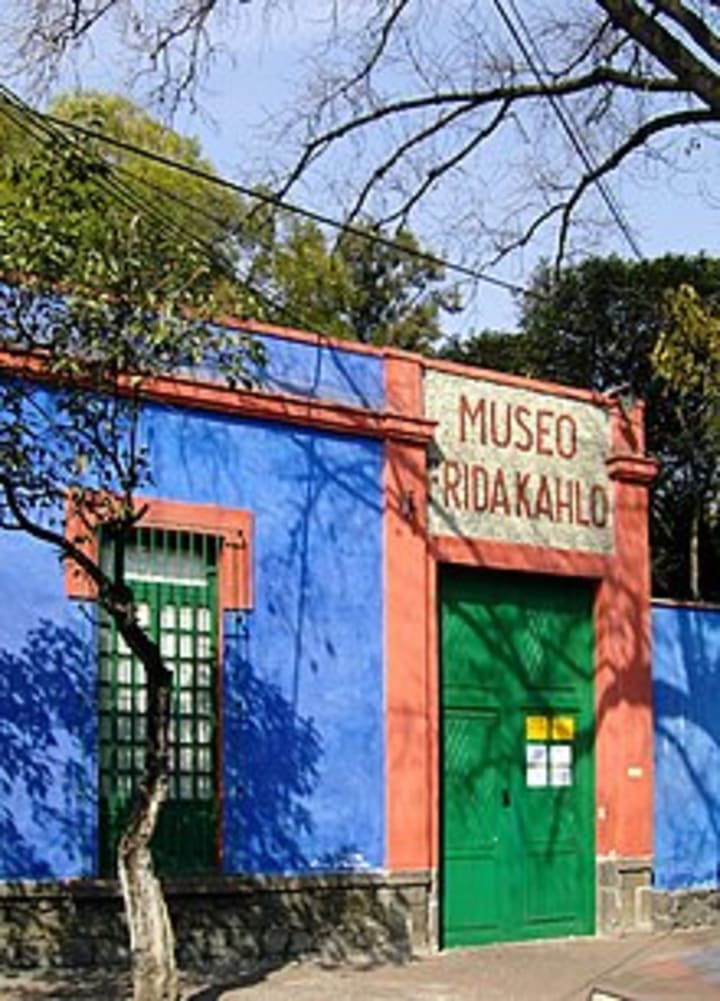
The Frida Kahlo Museum (Spanish: Museo Frida Kahlo), also known as the Blue House (La Casa Azul) for the structure's cobalt-blue walls, is a historic house museum and art museum dedicated to the life and work of Mexican artist Frida Kahlo. It is located in the Colonia del Carmen neighborhood of Coyoacán in Mexico City. The building was Kahlo's birthplace, the home where she grew up, lived with her husband Diego Rivera for a number of years, and where she later died in a room on the upper floor. In 1957, Diego Rivera donated the home and its contents in order to turn it into a museum in Frida's honor.
.....................................................................................................
About the Creator
Novel Allen
Clouds come floating into my life, no longer to carry rain or usher storm, but to add color to my sunset sky. ~~ Rabindranath Tagore~~
Enjoyed the story? Support the Creator.
Subscribe for free to receive all their stories in your feed. You could also pledge your support or give them a one-off tip, letting them know you appreciate their work.
Reader insights
Outstanding
Excellent work. Looking forward to reading more!
Top insights
Compelling and original writing
Creative use of language & vocab
Easy to read and follow
Well-structured & engaging content
Excellent storytelling
Original narrative & well developed characters
Expert insights and opinions
Arguments were carefully researched and presented
Eye opening
Niche topic & fresh perspectives
Heartfelt and relatable
The story invoked strong personal emotions
Masterful proofreading
Zero grammar & spelling mistakes
On-point and relevant
Writing reflected the title & theme

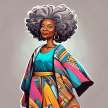
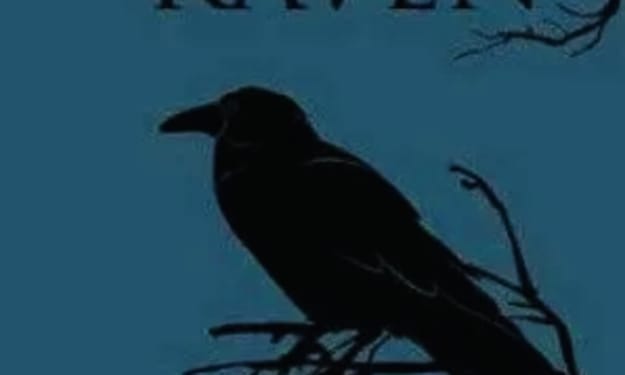



Comments (8)
An amazing woman. Life of the artist told in the 1st person, very informative and intimate.
Oooo, I really liked the Two Frida's with the connecting hearts! And whoaaaa, though bed ridden, she still went to the gallery? She's so wow!
Frida was such a warrior and a huge talent. I hear that she had fibro too No. I really enjoyed this piece a lot! Awesome work my friend! :)
We seem to know so much about "la Reina," yet she remains a beautiful mystery. I admire the way you started her narrative in first-person. It made me feel close to her. Thank you!
Of course I’ve seen the film at the cinema many years ago but don’t remember a lot so this filled in a number of gaps! An amazing artist and pioneer. Thanks very much for sharing.
I enjoy this story and very inspirational 😍Thanks for sharing
I did not know about Robinson’s $200 purchases. 1938 that’s a lot, however to think those paintings once sold for an amount t that sounds affordable (now) Great piece Novel. I loved your first person approach with the narrative.
I love Frida Khalo! My favorite painting of hers is Henry Ford Hospital 1932. From what I’ve read she was also bisexual and would sleep with her unfaithful husband’s mistresses. She’s such a phenomenal modern art figure. Great article 💕